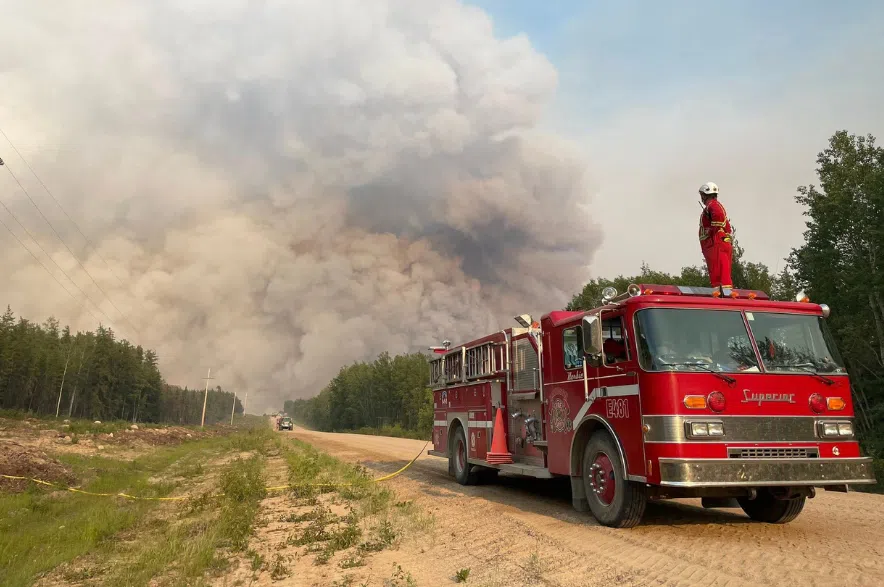by Steve Lambert
WINNIPEG — Governments and non-profit groups are taking time to review this year’s wildfire season and the unprecedented challenges posed by evacuating tens of thousands of people across wide swaths of the country.
The Canadian Red Cross registered 52,000 people across the Prairies, Ontario and Atlantic Canada, making it the agency’s largest domestic operation in recent memory.
Read more:
- Wildfires burn through 40 years of timber harvest in Saskatchewan
- Memories, valuables and hope found in Denare Beach wildfire ashes
- Full coverage of Saskatchewan Wildfires in 2025
There were several hundred flights to get people out of remote communities, some inaccessible by road.
Two people died after being trapped by fire near Lac Du Bonnet, Man.
The length of the wildfire season also stood in sharp contrast to recent years. In parts of the country, a dry spring meant forest floors didn’t “green up,” so the ground cover provided fuel for fires to grow and spread quickly.
In Saskatchewan, that season began in May.
The Saskatchewan Public Safety Agency said on Oct. 12 there have been 501 fires in Saskatchewan so far in 2025. The five-year average to date for Saskatchewan wildfires is 461. The agency said were still four active fires burning in Saskatchewan on Sunday.
It said that 33 communities had been evacuated in the province this year, while only five evacuations were handled by SPSA in 2024 and the five-year average in the province was just three.
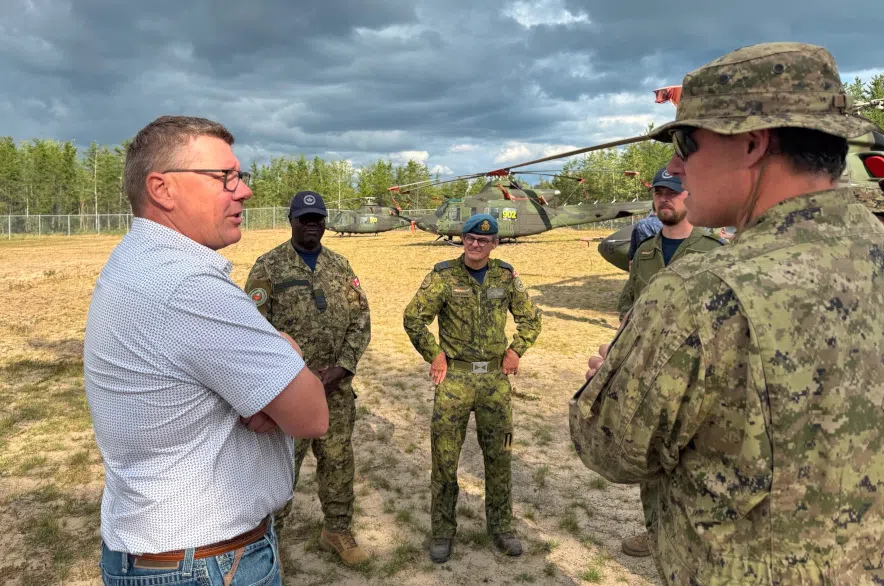
Premier Scott Moe visits Beauval and La Loche to talk about the wildfires that have, and continue to, affect the communities. (Scott Moe/X)
Steve Roberts, vice-president of operations with SPSA, said in September that the agency will perform an after-action review once the season is behind them, that would include looking at incidents to consider fire behaviour and talking to national partners about their experiences.
Roberts said the review will address a number of questions, like how the agency managed the evacuation process, how it managed setting the priorities for the response, and when to call in extra resources.
“There were questions about the military and why was the military not called first, rather than second,” said Roberts.
In the future, Roberts said there will be more resources to call on, as Saskatchewan recently joined with Nevada and California in a firefighting compact.
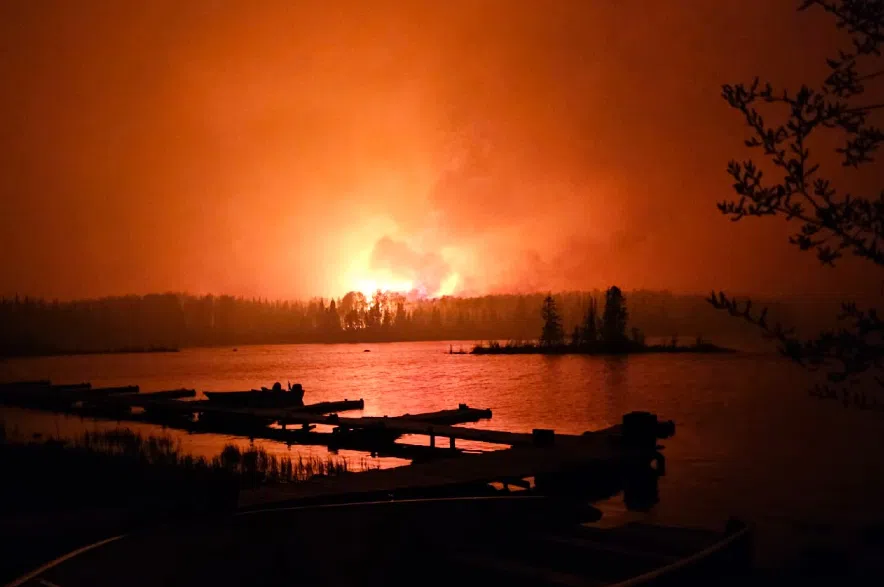
Fires burn near Flin Flon, MB. (Martin Spies/X)
In Manitoba, where some 32,000 people fled their homes, fires started earlier in the spring and kept popping up through most of the summer. Snow Lake, a town of 1,000, was evacuated twice.
For Flin Flon Mayor George Fontaine, whose community of 5,000 was evacuated for four weeks starting in late May, a key takeaway is that wildfire crews should be prepared to face blazes earlier than normal.
“You no longer can just wait for, for example, until the May long weekend to equip (wildfire crews). Nature’s not waiting and we can’t,” Fontaine said in an interview.
More fires also require more water bombers, Fontaine said. When flames erupted near Flin Flon, in the province’s northwest, water bombers were already tackling fires in Whiteshell Provincial Park in the southeast.
Fontaine praised the response from the Manitoba government and neighbouring communities, including Opaskwayak Cree Nation, which accepted busloads of evacuees who couldn’t drive themselves out.
“We had to commandeer school buses and find volunteers to drive them,” he said.
The buses were able to make the 90-minute trip, drop off people awaiting travel further south, and return to Flin Flon to pick up more.
Things were more complicated in Pimicikamak Cree Nation, where several thousand people from the community and surrounding area were taken out by plane on 500-kilometre flights south to Winnipeg.
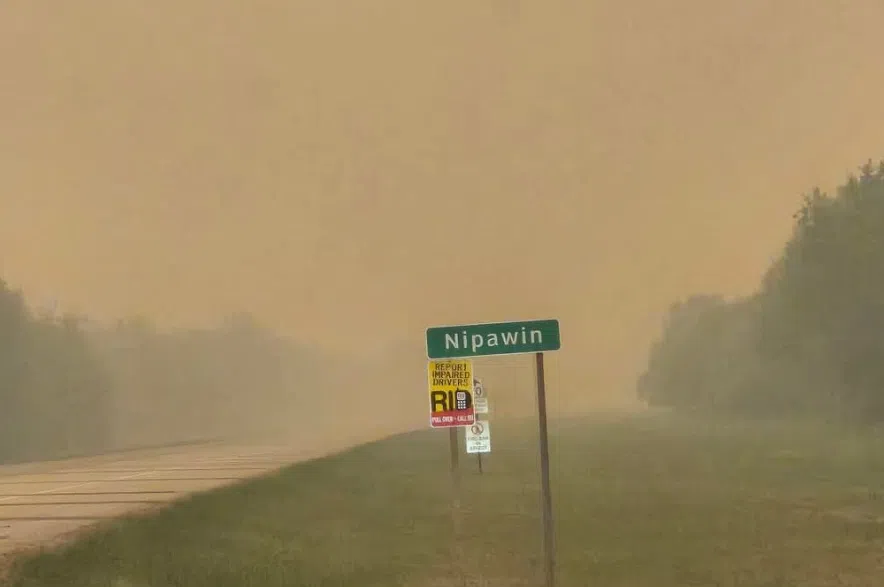
Smoke in Niapwin on June 4, 2025. (Jo Lukinchuk/Facebook)
Heavy smoke closed the local airport, so people were sent 40 kilometres away to Norway House. The trip included a bottleneck at a ferry crossing.
“It took 12 hours to get people through to Norway House,” Pimicikamak Chief David Monias said.
Getting everybody out of the area took a week, and the evacuation lasted roughly one month starting in early July.
Evacuees had to register twice — once for transportation and once for accommodation, Monias said. Elders and people with health problems faced long waits in hallways, and dealing with the federal and provincial governments, as well as the Red Cross, meant there was duplication, he added.
In Winnipeg, Brandon and other communities, efforts were made to accommodate the evacuees.
There were mass shelters, including those set up at an indoor soccer complex and the main convention centre in Winnipeg.
Officials tried to find hotel rooms for as many evacuees as possible.
But with up to 21,000 out of their homes at any one time and about 15,000 hotel rooms across the province — many of them occupied during the summer tourist season — it was an uphill battle. Some people were sent to Niagara Falls, Ont.
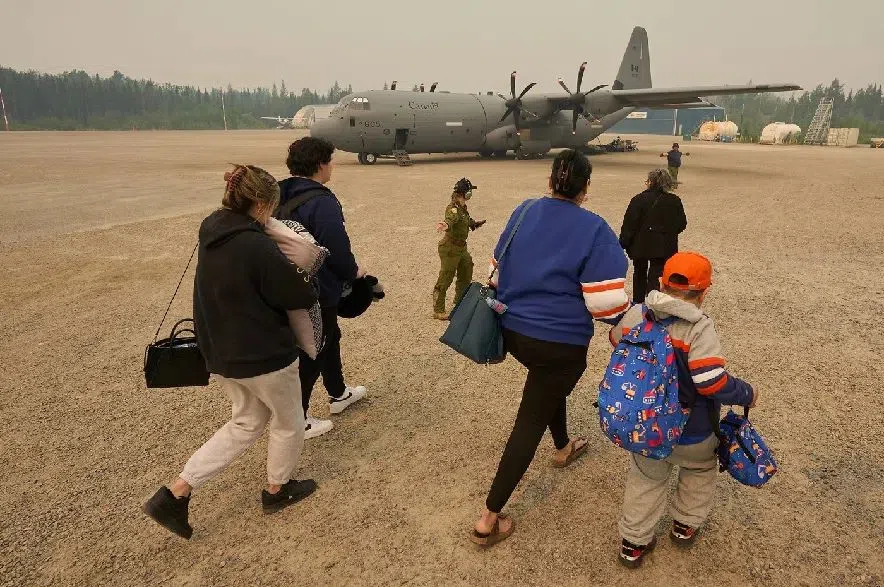
Members of the Royal Canadian Air Force help the Munroe family board a C-130 Hercules aircraft in Norway House, Man., Tuesday, June 3, 2025, at the Norway House Airport as crews continue to fight wildfires in northern Manitoba. (THE CANADIAN PRESS/David Lipnowski)
Monias said large open areas with cots aren’t good for families, the elderly or people with health issues. He’d like governments to use their authority to cancel major events and free up hotel rooms.
“There needs to be some kind of understanding with some of the cities that we’re sending our people into to make sure that if there’s events that are occurring … to prioritize evacuees to stay there,” Monias said.
Premier Wab Kinew expressed frustration at one point in the summer about a small number of hotel owners who he said were not offering up their rooms.
He said he’s considering using the Manitoba Developmental Centre in Portage la Prairie — a former institution for people with intellectual disabilities that closed last year — as an at-the-ready housing option for evacuees.
Professor Shirley Thompson, with the Natural Resources Institute at the University of Manitoba, said with the frequency of wildfires increasing, having a dedicated facility for evacuees could mean better cultural supports and other services.
“Not everyone speaks English … but also just for the fact they are so far away from home, to have someone that sees their perspective is very important.”
Thompson also said northern First Nations lack extensive air quality monitoring to keep an eye on the effects of wildfires, as well as public facilities with filtered air, such as libraries.
The Manitoba government and the Canadian Red Cross both said they will undertake thorough reviews of their operations during the wildfire season.
“This takes time,” the Red Cross said in a prepared statement.
— with files from CJME News
Read more:
